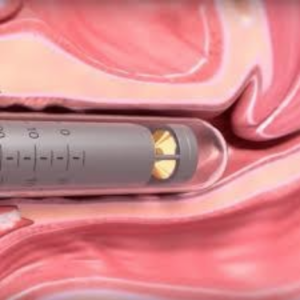STRESS URINARY INCONTINENCE
TREATMENT WITH INCONTILASE
A revolutionary non-surgical laser for vaginal health
SUMMARY
Urinary incontinence — the involuntary leaking of urine that many women often experience, usually while laughing, sneezing, coughing, or performing any strenuous activity — is very common after giving birth and with age. In fact, 40% of women suffer from some form of urinary incontinence and 80% of women will experience some kind of vaginal atrophy. Now there is something you can do about it before considering surgery. This new revolutionary technology is the first development that gives the chance of reverting the vaginal tissues back towards a healthier, younger state.
WHERE
Physimed MediSpa, Montreal
ANESTHESIA
Local topical anesthetic
PAIN
Very low
LENGTH OF PROCEDURE
30 minutes
RECOVERY TIME
No downtime
INVASIVENESS
Low
The laser has a photothermal heating effect on collagen in both the vaginal walls and the urinary conduit (urethra) which causes restructuring and regrowth of the collagen. This results in thickening and tightening of the vaginal walls and urethra to improve atrophy, dryness, and laxity, and to prevent urine loss. To achieve satisfactory results, the patients usually need 3 treatments one month apart.
Medical studies have also concluded that 94% of women reported that stress urinary incontinence improved significantly after 120 days and 68% were completely dry and free of stress urinary incontinence 120 days after the treatments. 95% of women indicate that they experience a more than moderate level of vaginal tightening as well as an improved lubrication which can improve sexual experience.
A special attachment, similar to a speculum as used during a pap test, is inserted into the vagina, during which the entire vaginal region is treated with short laser pulses through a small hand piece. The entire procedure is extremely well-tolerated by patients.
You can leave immediately after the procedure and continue your daily routine. There may be some minimal sensitivity after the procedure and a transparent discharge for 2-3 days afterwards. Heavy lifting or sexual intercourse is not recommended for 1-2 weeks after the procedure.

The indications for IncontiLase therapy are mild and moderate stress- and mixed-urinary incontinence (SUI).
Stress urinary incontinence (SUI) is a common problem in women that causes the involuntary loss of urine during coughing, sneezing, laughing, or physical exertion such as running or climbing stairs. The cause for this involuntary loss of urine is the weakening of the urethral closure mechanism, which is the result of changes in the pelvic floor region. The main contributing factors are vaginal child birth, obesity, and aging. Vaginal rejuvenation treatments can promote a great improvement in SUI symptoms for women.
This laser treatment is specific to the area of the vagina and the urinary tract (urethra).
This stress urinary incontinence treatment is a simple, non-surgical, 30 minute, in-office procedure. It is highly effective, pain-free, and safe. You can leave immediately after the procedure and continue your daily routine.
To keep the results achieved by this laser treatment, we recommend to our patients to come back for an annual maintenance treatment.
Until now stress urinary incontinence was treated non-invasively through muscular training, known as Kegel exercises, which are only marginally effective since they rely on daily compliance. Stress urinary incontinence is also treated invasively with a surgical implant known as a Urethral Sling. This procedure requires hospitalization, recovery time and could potentially cause serious complications.
Effective results for vaginal relaxation syndrome could only be achieved through invasive surgical treatments such as anterior and posterior vaginal plastic surgery. There are many postoperative complications associated with these procedures and a relatively high degree of dissatisfaction with the results. The treatment options for atrophy due to menopause typically involve hormone therapy.
For more information, ask for a free consultation with an aesthetics doctor.
